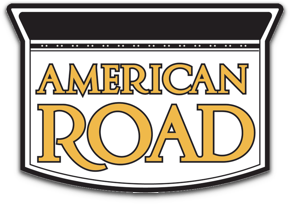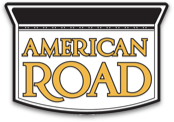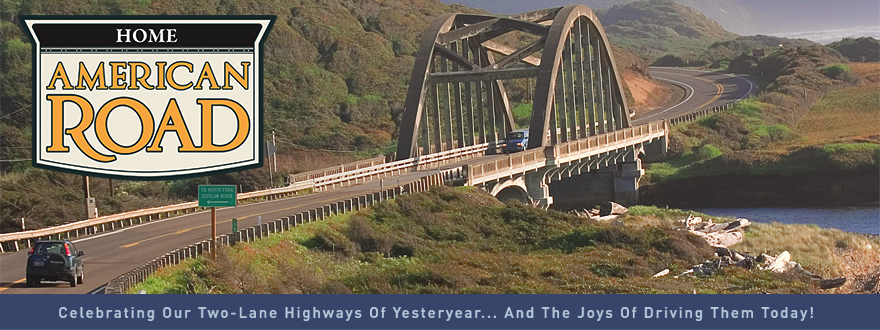
windycityroadwarrior
-
Posts
7 -
Joined
-
Last visited
Content Type
Profiles
Forums
Gallery
Blogs
Calendar
Posts posted by windycityroadwarrior
-
-
Is that the area where the road may or may not (I think lawyers are still fighting it out) have been undermined by the quarrying? I was somewhat aware that there had been an airport around there. I may even have read that it was named Stinson but I'm not sure.
Denny:
Asked and answered! I just finished a post to my blog about Stinson Airport, the upcoming articles, and I also put 18 related photos on my flickr gallery:
Stinson Airport flickr Gallery Image Set
Thanks for the further inquiry!
Regards,
Dave Clark
-
I enjoyed the Iowa pics (Any more shots of the thresher museum?) but I've got a decidedly non-Iowa thread-twisting question. The blog link accesses not just the US-34 pictures but your full Flickr gallery. Just beyond the Iowa stuff is a picture (Killups_Waco_1930-0825) of a fellow in front of an airplane that I assume is a Waco. Wacos were built not too far from here where an annual fly-in is still held. Can I ask what's your Waco connection?
Denny:
I'll be happy to dig up some more thresher museum stuff if I can. As for the Killups-Waco picture, I know a bit more about the fellow in front of the airplane than about the airplane itself. His name was Arthur Killups, and he was a barnstorming pilot from LaGrange, Illinois in the 1920s and early 1930s. As a pilot, his greatest moment of flying glory came on August 24, 1930, when he won the men’s Class A Atlantic Derby, flying the 1500 miles from Miami to Chicago in just under 12 hours.
But Mr. Killups first came to my attention not for his flying but for the businesses he ran on Illinois Route 4 in the suburbs west of Chicago--and of course Route 4 would become U.S. 66 in 1926. First, he owned Lyons Motor Sales, which was a Hudson-Essex dealership located on Ogden Avenue in Lyons, Illinois. (In fact, this location was on Illinois Route 4 and 18 and it was on the section of Ogden that was original 66 from 1926-28. It was also U.S. 32 until that route was eliminated in the early 1930s and then it became U.S. 34--so we are back to the original topic!
Killups used his income from the car dealership to fund his aerial activities, and he also opened an airport on IL 4/U.S. 66 on Joliet Road in McCook, Illinois. The airfield was named Stinson Airport. Killups was a dealer for the Stinson Aircraft Corporation and thus named his field after the brand of planes you could buy there and to cash in on the name of the then-famous flying family. Stinson Airport stayed in business until 1958, when it closed due to expanded rock quarrying operations at the location. If you are familiar with the closed section of 66/Joliet Road in McCook and Hodgkins, well that is where the old airport was located (north of Joliet Road, east of East Avenue.
I actually had forgotten that the Killups photo was still on my Flickr gallery. I have a couple of articles coming up in a magazine later this year that contain a series of stories about pioneering aerial events that happen to coincide with U.S. 66. So, thanks for asking, Denny!
Regards,
Dave Clark
-
I am just writing to thank American Road magazine for the review of my book in the Inspection Station section of the Winter 2007 issue.
Although I have not posted often to this forum in the last few years, I expect that to change as my activities having to do with highways expand in 2008. Happy New Year to all!
Regards,
Dave Clark
-
I was thinking about the Iowa section of U.S. 34 when I was watching the TV coverage of the Iowa Caucuses yesterday. I believe most folks who Blue Highways would have positive experiences on this great old road.
I have a blog post that I put up today that links to 11 photos from our Iowa U.S. 34 trip back in June 2004:
There are some pristine Portland Concrete sections out there for anyone who would like to get out to the southern Iowa countryside and find them!
Enjoy!
Regards,
Dave Clark
Windy City Road Warrior
-
"On January 1, 1927, “Final location of the United States’ most important roads in the country was announced today by the bureau of public roads of the department of agriculture. The system as finally selected embraces ten main transcontinental routes designated by numbers which are multiples of ten while the important north and south routes are numbers 1, 11, 21, etc.”
Thus reported the Chicago Tribune on January 2, 1927..."
Balance of this nice blog entry on the Windy City Road Warrior site is at:
Hey--thanks for noticing my new blog almost before I had made it public!
-
Hi folks:
I just wanted to let everyone know about an upcoming exhibition and related events which have a Route 66 connection.
As part of this event, I will be presenting a Lunchtime Program on September 27th from 12:15 p.m. to 1 p.m. at the Chicago Architecture Foundation, at Jackson Blvd. and Michigan Avenue in Chicago. My talk will be titled "Route 66 in North Lawndale: A Journey through History."
North Lawndale is the Chicago community that 66 traverses on the west side of the city, from Western Avenue to the suburb of Cicero. The exhibition that is the center of all the programs is titled "Learning from North Lawndale." In my talk, I'll trace the history of this stretch of highway, which was a Native American trail, Cook County's first public highway, a toll plank road, and park boulevard before being utilized as part of our beloved Mother Road.
More information about the North Lawndale exhibition is available at:
http://www.architecture.org/exhibitions.html#lawndale
Most of the events and programs, including my September 27th talk, are free and open to the public.
North Lawndale has a fascinating history, and was home at one time or another to Golda Meir, Benny Goodman, and Dr. Martin Luther King, Jr.
Regards,
Dave Clark
Windy City Road Warrior



Route 66 Photoblocker
in National Road / U.S. 40
Posted
Okay, come on--you are approaching a green light at an intersection at a reasonable speed. Whenever approaching a green light, you still do check for cross-traffic, since you never know what other drivers are going to do. You also check for pedestrians/bikes/other hazards, as you would for any intersection at any time. Things are clear, so you proceed as you are legally entitled, to go through the intersection on your green. The second your car crosses into the intersection, the light turns yellow, and it is red by the time you clear the crossroads.
This scenario above has NO schoolkids, NO hazards, NO illegal actions, NOR even any potential problems. Yet people I know who have encountered the above scenario have gotten tickets. If the light is green when you go in, why do you still get a ticket? This is the problem--not scofflaws, but overzealous punishment of people who do nothing wrong. THIS is the problem with these red light cameras--they catch people who entered the intersection on a valid green light but do not clear the intersection before the red.
This is NOT about dangerous driving, it is about wasting everyone's time, energy, gas, and money.
Regards,
Dave Clark